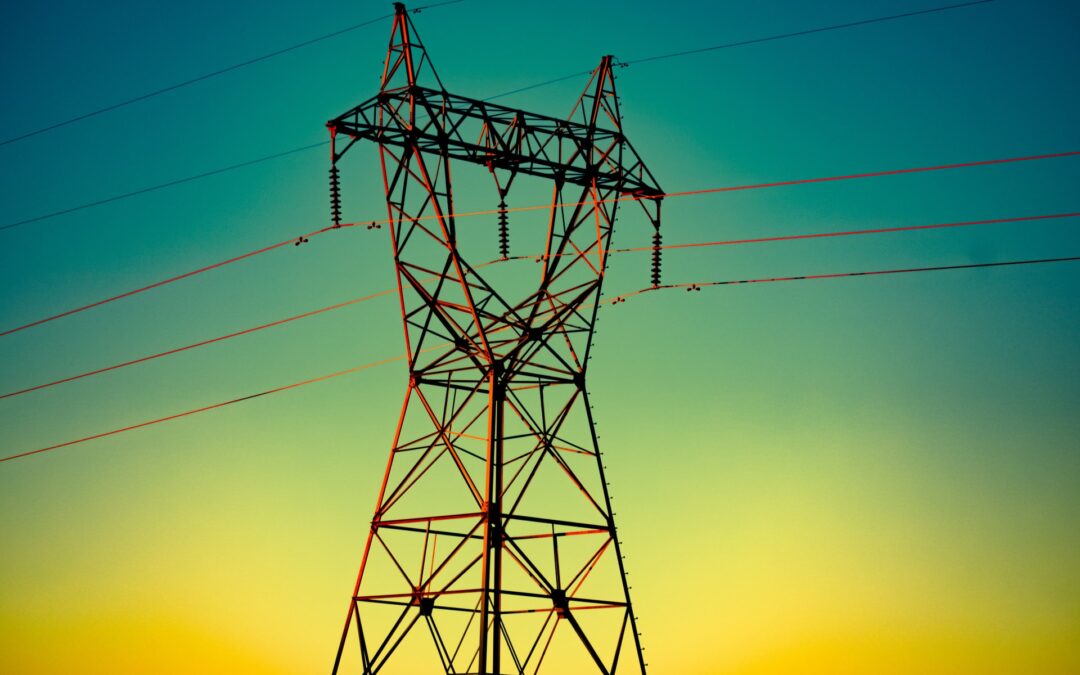In our daily life, we are aware of the importance of electricity. Besides the electrical power, we also have to know more information about the high voltage electrical parts, accessories and other line construction hardware, overhead line connectors and so on.
Construction of Power Generation Centers with large electrical energy production capacity such as; PLTA, PLTU, PLTGU, PLTG, PLTP require many requirements, especially the problem of location which cannot always be close to the load center such as; cities, industrial areas and others. This makes the electric power must be channeled through the transmission system, namely:
- Transmission Line
- Substation
- Distribution channel
If one part of the transmission system is disturbed, it will have an impact on other parts of the transmission, so that the Transmission Line, Substation and Distribution Channel are one unit that must be managed properly, such as; High Voltage Air Lines (SUTT) and Extra High Voltage Air Lines (SUTET), are means in the air to distribute large-scale electric power from the Generator to load centers using high voltage or extra high voltage.
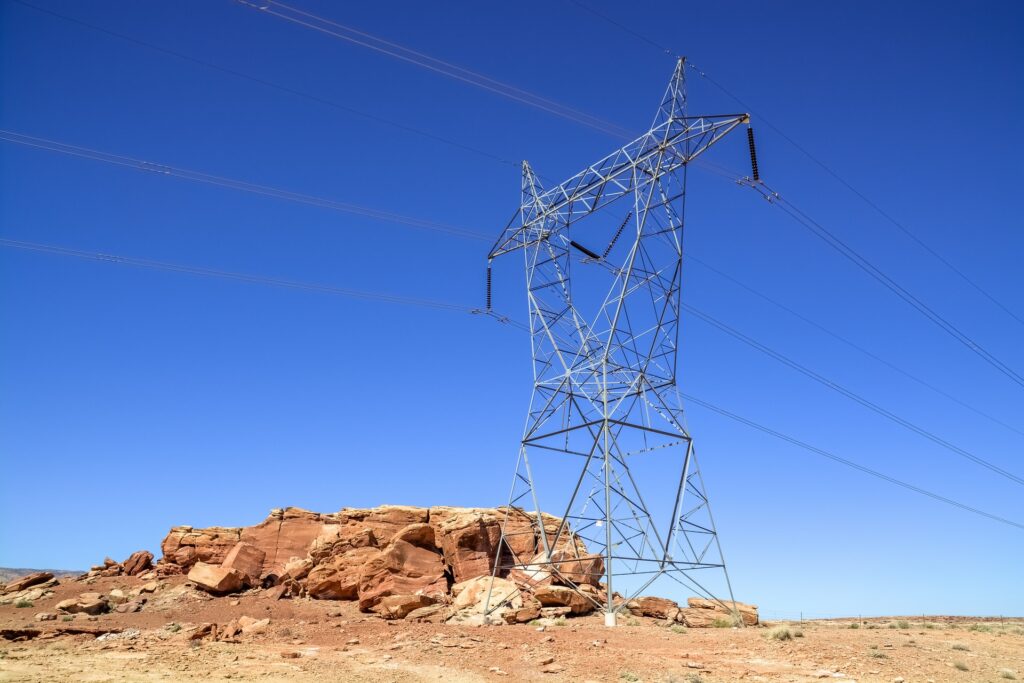
How to transmit and distribute electricity
Multiple Channels
Air duct
SUTT/SUTET is a type of Electric Power Transmission Line that is widely used by PLN in Java and Bali because the price is cheaper than other types and it is easy to maintain. The construction of SUTT/SUTET has gone through a design process that is safe for the environment and in accordance with international safety standards, including: the height of the conducting wire, the cross-section of the conducting wire, the insulation power, the electric and magnetic fields, and the corona hiss. There are several types of overhead lines in the PLN P3B Java Bali Electricity System, including: High Voltage Air Lines (SUTT) 70 kV, High Voltage Air Lines (SUTT) 150 kV, Extra High Voltage Air Lines (SUTET) 500 kV.
Cable Channels In certain areas (generally urban) which consider aesthetic problems, the environment is difficult to get free space, high reliability, as well as inter-island networks, Cable Channels are installed, including High Voltage Cable Channels (SKTT) 70 kV, High Voltage Cable Channels (SKTT) 150 kV, High Voltage Marine Cable Line (SKITT) 150 kV. Cable construction can be seen.
Gas Insulated Line (GIL) is a gas insulated line, for example: SF6 gas, as shown in the figure. Because it is expensive and the risk to the environment is very high, this channel is rarely used.
Tower
Electric power that is transmitted through the transmission system generally uses bare wire so that it relies on air as an insulating medium between the conducting wire and the surrounding objects. Tower is a sturdy building construction, serves to support / stretch the conductor wire with a height and distance sufficient to be safe for humans and the surrounding environment. Between the tower and the conductor wire is insulated by an insulator.
According to the form of construction, the types of towers are divided into 4 types, namely; Lattice tower, Tubular steel pole, Concrete pole, and Wooden pole.
Lattice Tower construction is the most widely used type of SUTT/SUTET construction in the PLN network because it is easy to assemble, especially for installation in mountainous areas and away from highways. However, intensive supervision is needed because the iron is prone to theft. The tower must be strong against the loads acting on it, including: the gravity of the tower and the conducting wire (compressive force), the tensile force due to the stretching of the wire, the wind force due to wind blowing on the wire and tower body.
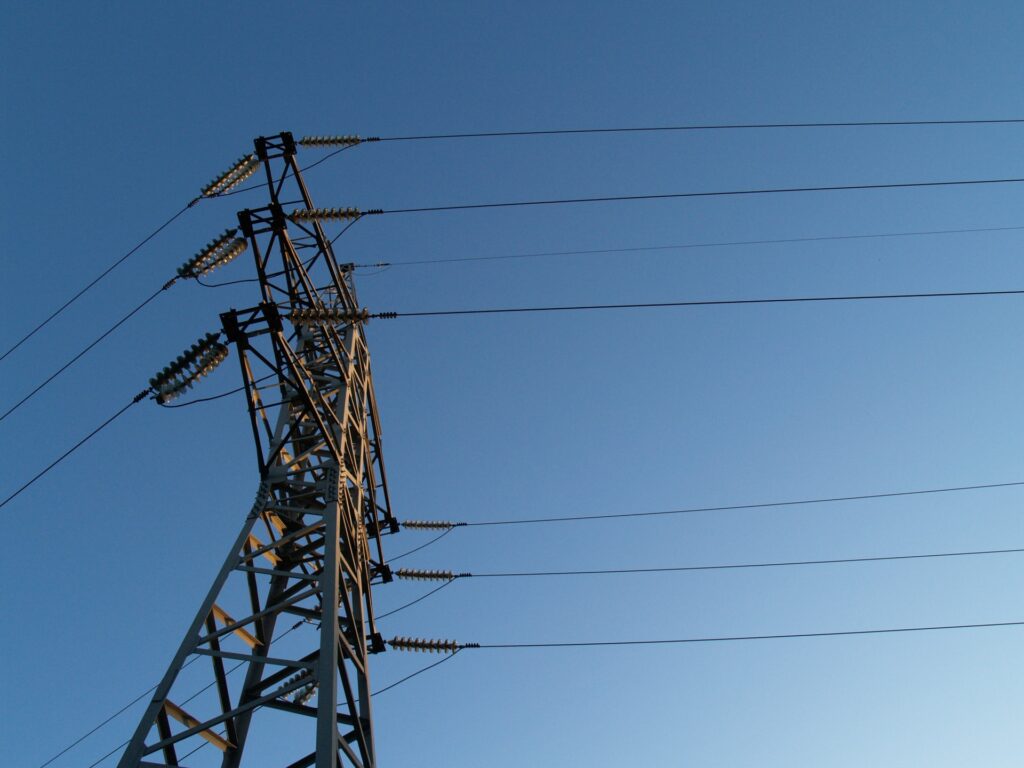
The different types of power transmission tower
According to its function, the tower is divided into 7 types, namely:
Dead end tower is the end pole located near the substation, this tower almost completely bears the tensile force.
Section towers are insulating poles between a number of supporting towers and a number of other supporting towers for reasons of convenience during construction (drawing wire), generally having a small turning angle.
Suspension towers are support towers, these towers almost completely bear gravity, generally have no turning angles.
Tension tower is a tension tower, this tower bears a tensile force greater than gravity, generally has a turning angle.
The transposition tower is a tension tower that is used as a place to change the position of the phase wire to improve the transmission impedance.
Gantry tower is a portal-shaped tower used at a cross between two transmission lines. This pole is built under the existing transmission line.
Combined tower is a tower used by two transmission lines with different voltages.
According to the operation, the arrangement/configuration of the tower phase wires are grouped into several types, namely, the Delta type is used in the horizontal configuration. The Pyramid type is used in a vertical/upright configuration. And the Zig-zag type, namely the phase wire is not on one side of the tower arm.
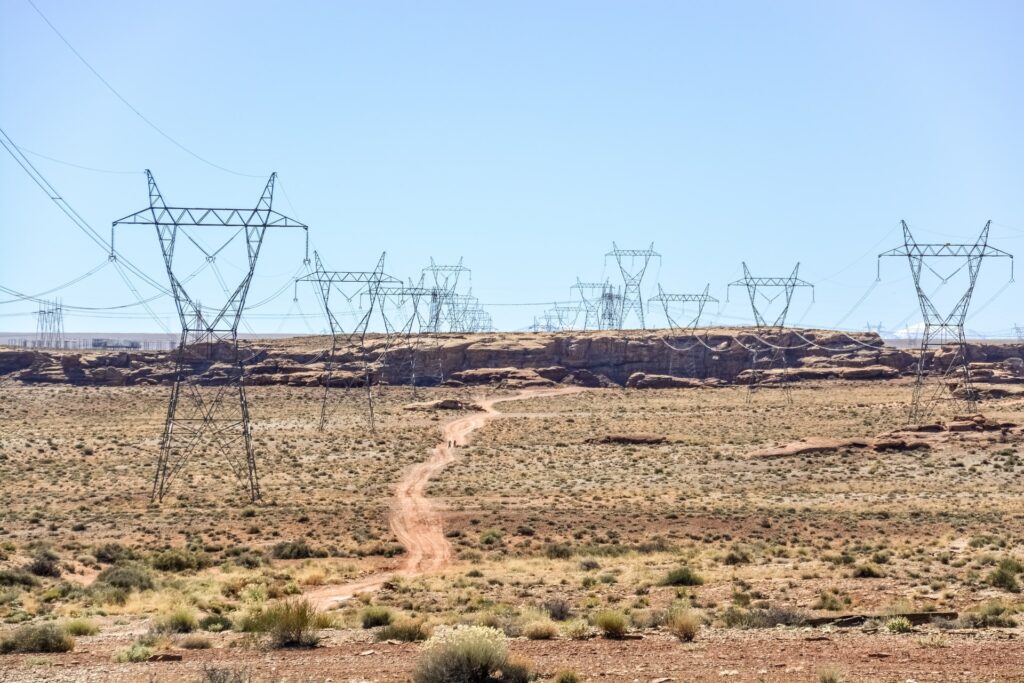
What is Conductor in power line fittings system
Conductor is a medium for the flow of electric current from the generator to the substation or from GI to other GIs, which are stretched through towers. The conductor in the tension tower is held by a tension clamp, while in the tower suspension it is held by a suspension clamp. Behind the clamp, a string of isolators is attached to the tower.
Conductor Material
Conductor materials used for electrical energy lines need to have the following properties: high conductivity, high mechanical tensile strength, center of gravity, low cost, and not easily broken.
Copper type conductors (BC: Bare copper) are good conductors, because they have high conductivity and good mechanical strength. However, due to the high price, copper conductors are prone to theft. Meanwhile, the aluminum type is lower in price and lighter in weight but has lower conductivity and mechanical strength than copper. And in general, SUTT and SUTET use ACSR (Aluminum Conductor Steel Reinforced). The inside of the wire is steel which has high mechanical strength, while the outside has high conductivity. Because the nature of the electrons prefer the outside of the wire than the inside of the wire, ACSR is suitable for use in SUTT / SUTET.
For areas where the air contains high sulfur content, the ACSR/AS type is used, namely the steel wire is coated with aluminum. In the transmission line, what needs to be increased is the distribution capacity, but if the SUTT is in an area prone to landslides, then a T-ACSR (Thermal Aluminum Conductor Steel Reinforced) conductor is installed which has a large capacity but the weight of the wire does not change much. The conductors in SUTT/SUTET are stranded wires or twisted fibers, in order to have a greater capacity than solid wire.
In a rotary current system, the output of the generator is three phases, each phase has a phase shift angle of 120 0 . In SUTT, the phases R, S and T are known whose phase sequence is always R above, S in the middle and T below. However, in SUTET the phase sequence is not always sequential because apart from length, the character of the SUTET is heavily influenced by the capacitance factor from the earth and the configuration is not always vertical. In order to balance the distribution impedance, every 100 km the phase wire is transposed.
The cross section and the number of conductors are adjusted to the capacity of the power to be distributed, while the distance between the phase wires and the beam wires is adjusted to the operating voltage. If the wire is too small, the wire will heat up and the transmission loss will be large. At high voltage (SUTET) the cross section of the wire, the number of wires and the distance between the beam wires affect the amount of corona which is suspected to be a hiss or noisy.
Distance between phase wires
The wire distance between the 70kV SUTT phases is ideally 3 meters, SUTT = 6 meters and SUTET = 12 meters. This is because it avoids the swing effect that can cause flash over between phases.
Conductor wire equipment
Conductor wire fittings or fittings are: Spacers, Vibration dampers. For repair purposes, a Repair Sleeve or Armor Rod is installed. The wire connection is called the Mid Span Joint. Meanwhile, for the security of air traffic, Safety Balls and Aviation Lights are installed, each of which serves to signal aircraft pilots. For Aviation Lights mounted on the tower and on the conductor wire with an induction system from the conductor wire. Arching Horn is equipment that is installed on the Cold side (tower) of the insulator series which functions as a medium for releasing arcs from over-voltage between the Cold and Hot sides (conducting wire), and at the desired distance can be useful for cutting the voltage in the event of a lightning strike and as switching to secure expensive substation equipment.
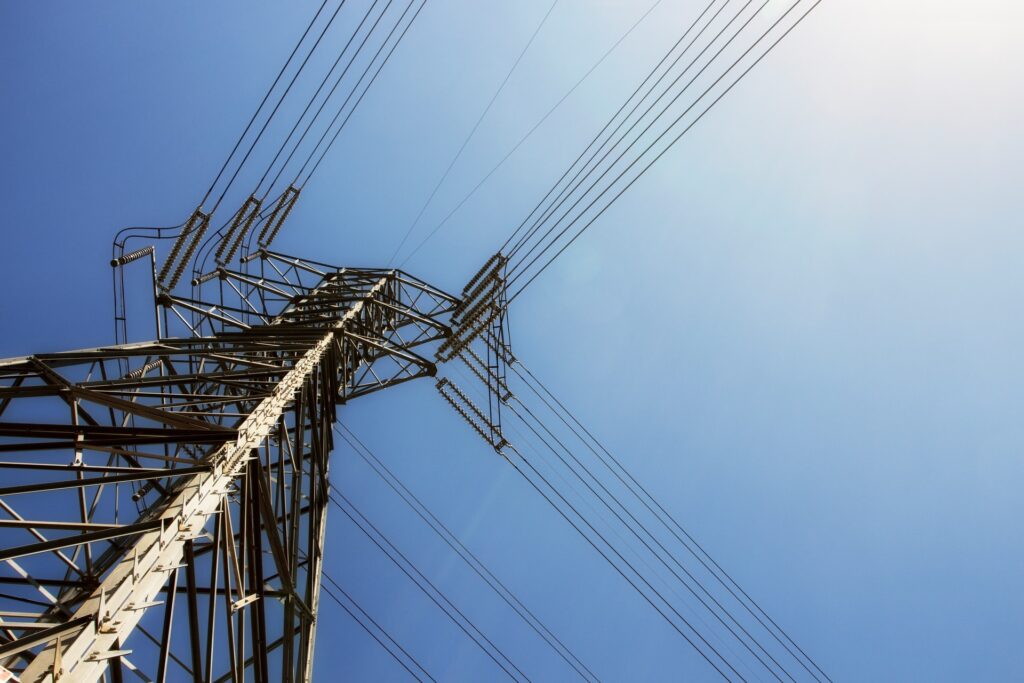
The Ground Wire in high-voltage power line transmission
Ground Wire or Earth Wire (Lightning Wire) is a medium to protect the phase wire from lightning strikes. This wire is installed above the phase wire with the smallest possible angle of protection, because it is considered that lightning strikes from above the wire. However, if lightning strikes from the side, it can result in the phase wire being struck and interference. The wire in the tension tower is held by a tension clamp, while in the tower suspension it is held by a suspension clamp. In the tension clamp, a jumper wire is installed that connects it to the tower so that the lightning current can be discharged to the ground through the tower. For the purpose of improving the quality of grounding, from this jumper wire, another wire is added to the ground which is then connected to a grounding wire.
Ground Wire Material
The ground wire material is made of galvanized steel, or has been coated with aluminum. In SUTET which was built starting in the 1990s, in the ground wire fiber optic is used for telemetry, tele protection and telecommunications purposes, known as OPGW (Optic Ground Wire), so that it has several functions.
Ground Wire position
The number of ground wires is at least one above the phase wire, but generally two are installed in each tower. Installation of only one piece for two conductors will make the angle of protection large so that the phase wire is easily struck by lightning. The distance between the ground wire and the phase wire in the tower is equal to the distance between the phase wires, but in the middle of the crossbar it can reach 120% of that distance.
Tower Grounding
Tower grounding is a transmission system earthing equipment, which functions to transmit electrical current from the tower body to the earth. The following are some of the provisions of Tower Grounding, including:
Tower Grounding Value, must be made as small as possible so as not to cause high tower voltages which in the end can disrupt the distribution system: 70kV system: maximum 5 Ohm, 150kV system: maximum 10 Ohm, and 500kV system: maximum 15 Ohm.
Types of Grounding, there are several types of grounding, including: Electrode Bar, a metal rail embedded in the ground. This grounding is the most simple and effective, where the value of ground resistance is low. Electrode Plate: a metal plate that is buried in the ground horizontally or vertically. This grounding is generally for protection against lightning. Counter Poise Electrode: a conductor that is held horizontally in the ground. This grounding is made in the area. which has a high ground resistance value, or to improve the ground resistance value. Mesh Electrode: ie a number of conductors laid horizontally on the ground which is generally suitable for sloped areas.
Types of Connections on the tower, there are 2 types of connections, namely; Direct splicing on the bottom stub and splicing on the top of the stub.
4 Grounding Components, namely: Grounding wire: made of high-conductivity material: copper, Grounding clamp or cable shoe: thick copper material, Grounding rod: made of copper pipe or galvanized iron, Grounding wire connection clamps made of copper.

